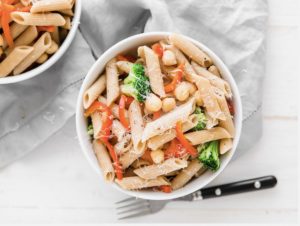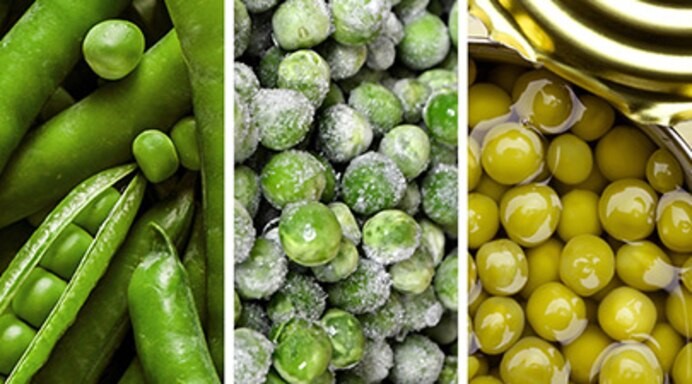By Lacey Mangano, OHSU Dietetic Intern and Master of Science Student
Sometimes on the top of the list of what to avoid, “processed foods” seem to have a bad reputation. Fresh foods are often considered a “best choice” – but is that true? There is definitely more to the story!
When it comes to food, the word “processed” is a broad term that refers to any change in a food from its original, raw state. There are different levels of processing, which range from unprocessed, minimally processed, to highly processed. Fresh fruits, vegetables and meats are examples of “unprocessed” foods.
“Highly processed” foods go through many steps, often have more than one ingredient and you find them throughout the store. An example of a “highly processed” food is a frozen meal that is ready to eat after heating. These meals/foods can be higher in added sugars, sodium, and fat, which are often on people’s lists of ingredients to limit. These extras, as well as nutrients that can be lost during processing, are potential sources of the bad reputation that “processed foods” have.
What about the minimally processed foods? While the foods that fit into this category are often up for debate, these are foods that are processed for safety and to help preserve nutrients and flavor. Examples include pasteurized milk, aged cheeses, frozen vegetables. Also included are foods designed to be easier to digest, such as lactose-free milk. Processing can also add vitamins and minerals, like folate and B vitamins which are added to grains.
Though opinions may differ, purchasing some processed foods can save time, money and perhaps even lead to less food waste. The convenience of vegetables that are frozen at their peak of ripeness and packaged in an easy-to-store bag is a big help. You can use them as needed, which could help avoid wilted and spoiled food found at the bottom of the refrigerator after an unexpectedly busy week. Frozen vegetables often cost the same, or may even be less expensive, than fresh produce.
For a simple, fast meal, stir frozen vegetables into any pasta or rice dish. You can even top a frozen cheese pizza with washed fresh spinach or frozen broccoli before heating. There are lots of choices!
Here’s a recipe with a simple stir-together meal from EatRight.org.

Quick Penne Pasta with Veggies Recipe
By Melissa Ohlson, MS, RD, LD
Ingredients:
8 oz uncooked penne pasta
2 tablespoons extra-virgin olive oil
2 cloves garlic, minced
1 16oz package frozen broccoli florets, thawed
1 16 oz can of garbanzo beans, drained and rinsed
1 medium-sized red bell pepper, thinly sliced; slices halved
½ teaspoon salt
¼ cup freshly grated or shredded parmesan cheese
Freshly ground black pepper
Directions:
1.Cook pasta in boiling salted water according to package directions.
2.Heat the oil in a large skillet over low heat
3.Add the garlic and sauté for 5 minutes, allowing the flavors to fully release into the oil
4.Add the broccoli, beans, pepper, 3 tablespoons water, and salt
5.Cover and adjust heat to medium. Steam, stirring occasionally, 5 to 7 minutes, or until the broccoli is hot and pepper is crisp and tender
6.Toss the pasta with the vegetables. Top with the parmesan cheese and fresh pepper
For a spicier flavor, add more garlic and/or pepper.
Substitute any vegetables you like, varying cooking time as needed.
Nutritional Information:
Serving size: 1 cup
Serves 8
Calories: 265, Total fat: 6g, Saturated fat: 2g, Cholesterol: 2mg, Sodium: 215mg, Total Carbohydrates: 41g, Dietary fiber: 7g, Protein: 12g
Note: You can use 16oz (2 cups) of frozen peas instead of garbanzo beans, if you prefer. The amount of protein is similar.
For more about wellness topics, go to www.tillamookcountyhealthmatters.org


